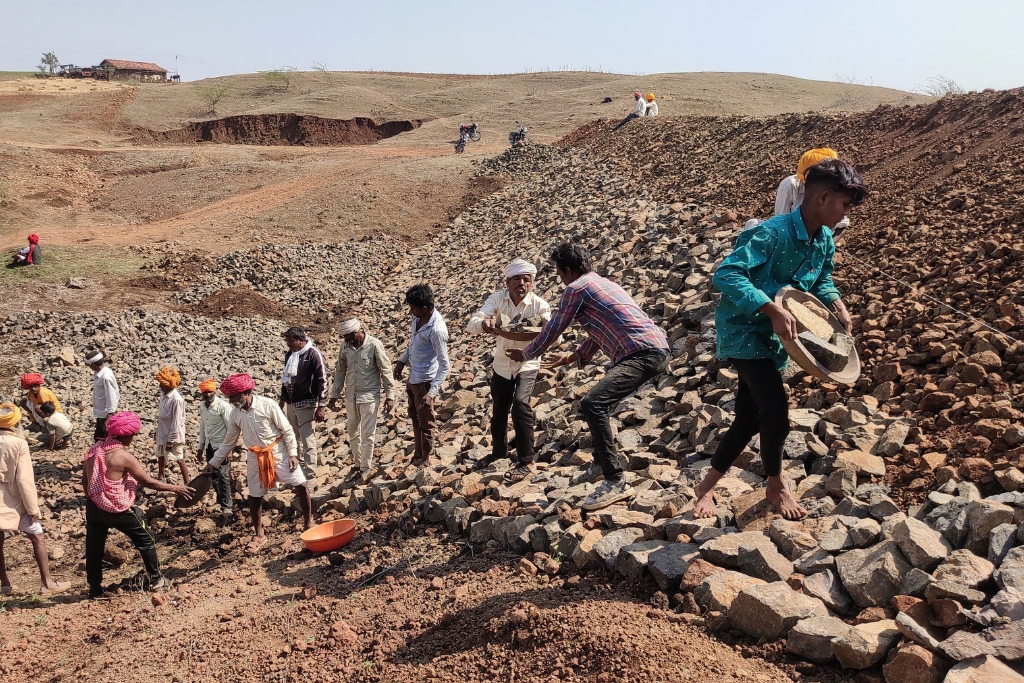
Halma – MP’s tribal festival helps heal earth
The tradition of Halma, which translates as ‘call for help,’ has been brought back from the brink of extinction and is now celebrated as an environmental festival in the heartland of India.
The summer gathering of around 1,300 villages in Jhabua and Alirajpur districts of Madhya Pradesh is a must-see occasion. That’s when thousands of members of the Bhil tribe come together to celebrate Halma, the age-old festival of collective labour.
Halma, which translates as ‘call for help,’ has been a traditional practice among the Bhil community. People from the tribe often volunteer to help an individual or a family during the construction or repair of their house. The assistance for manual labour extends to agricultural activities too and people even participate to manage the arrangements for a marriage within the community collectively.
In Jhabua, the tradition is now linked with water conservation practices. The district has been a drought-prone area, resulting in migration, single-crop agriculture and unemployment. A large number of tribals from Jhabua move out of their homes to work at construction and agriculture sites in Gujarat. In 2005, Shivganga, an NGO working in the region, initiated efforts to mitigate the water crisis here.
Also Read | Community ensures sustenance of vital ancient ponds
The work towards water conservation and resource management took the form of an annual festival at the Hathipava Hills of Jhabua in 2009. It has been a regular feature since then. The event begins with an invitation being circulated to over 40,000 families to attend the festivities organised by Shivganga.
The traditional practice involves people coming together to construct lakes at different places, resulting in water rejuvenation in the area. It leads to an increase in water availability and enhancement of soil moisture. Residents of around 1,300 villages continue to practise the tradition separately too.
Also Read | Rainwater Harvesting: How a parched village catches rain to prosper
Now the two-day event is celebrated every year between the festivals of Maha Shivratri and Holi in February or March. The dates are decided by the rural volunteers of Shivganga. The lakes have helped farmers to grow more than one crop on their land. Contour trenching has also been introduced to channelise it for optimal use.
After rainfall, trenches and contour lines fill with water, preserving soil moisture for the dry season. The stored water is used for irrigation, this festival’s community participation eases burdens and distress, despite ongoing tribal struggles.
Also Read | Competition encourages watershed management to drought-proof Maharashtra villages
The lead image at the top shows people celebrating the environment festival by collecting rocks and cleaning the area (Photo by Pranay Tripathi)
Pranay Tripathi is an Indore-based upcoming filmmaker. He is a Rural Media Fellow 2022 at Youth Hub, Village Square.






